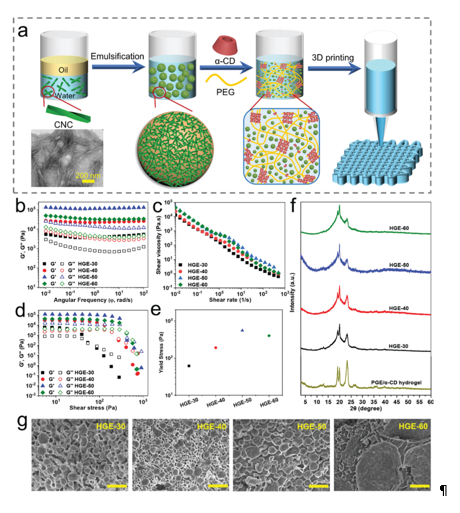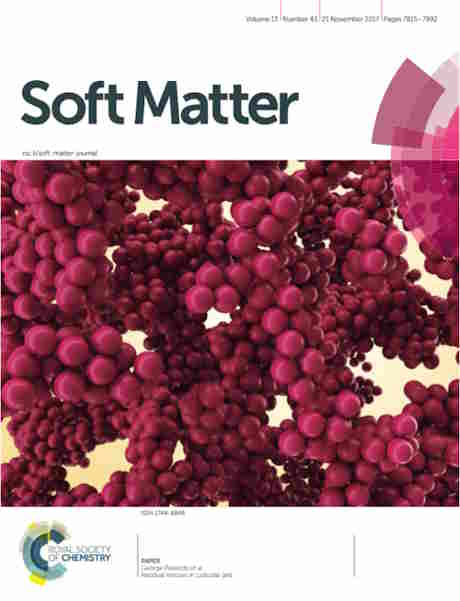
Publications

Pickering emulgels reinforced with host–guest supramolecular inclusion complexes for high fidelity direct ink writing*
Bo Pang, Rubina Ajdary, Markus Antonietti, Orlando Rojas And Svitlana Filonenko
Mater. Horiz., 9, 835 (2022)
* Publication relevant to FORGREENSOFT, published before the start of the project"
Direct ink writing (DIW) of Pickering emulsions offers great potential for constructing on-demand objects. However, the rheological properties of fluid emulsions greatly undermines the shape fidelity and structural integrity of 3D-printed structures. We solve here these challenges and realize a new route towards complex constructs for actual deployment. A dynamic, supramolecular host– guest hydrogel based on poly(ethylene glycol) and a-cyclodextrin was synthesized in the continuous phase of cellulose nanocrystalstabilized Pickering emulsions. The storage modulus of the obtained emulgels could reach up to B113 kPa, while being shear thinning and yielding precise printability. Diverse complex architectures were possible with high shape fidelity and structural integrity. The printed objects, for example a double-wall cylinder with 75 layers, demonstrated excellent dimensional stability (shrinkage of 7 2% after freeze-drying). With the merits of a simple fabrication process and the high biocompatibility of all the components, the concept of dynamic supramolecular hydrogel-reinforced emulgels represent a potentially versatile route to construct new materials and structures VIA DIW for use in bioproducts and biomedical devices.

Residual stresses in colloidal gels *
A combination of experiments and Brownian Dynamics (BD) simulations is utilized to examine internal stresses in colloidal gels brought to rest from steady shear at different shear rates. A model colloidal gel with intermediate volume fraction is chosen where attractions between particles are introduced by adding non-adsorbing linear polymer chains. After flow cessation, the gel releases the stress in two distinct patterns: at high shear rates, where shear forces dominate over attractive forces, the shear-melted gel behaves as a liquid and releases stresses to zero after flow cessation. After low shear rates, though, stresses relax only partially, similar to the response of hard sphere glasses and jammed soft particles. The balance between shear and attractive forces which determines the intensity of structural distortion controls the amplitude of the residual stresses through a universal scaling. Stress decomposition to repulsive and attractive contributions in BD simulations reveals that internal stresses mainly originate from attractive forces. Moreover, analysis of particle dynamics indicates that internal stresses are associated with sub-diffusive particle displacements on average smaller than the attraction range as such short-range displacements are not sufficient to completely erase structural anisotropy caused during the course of shear.
https://doi.org/10.1039/C7SM01655G